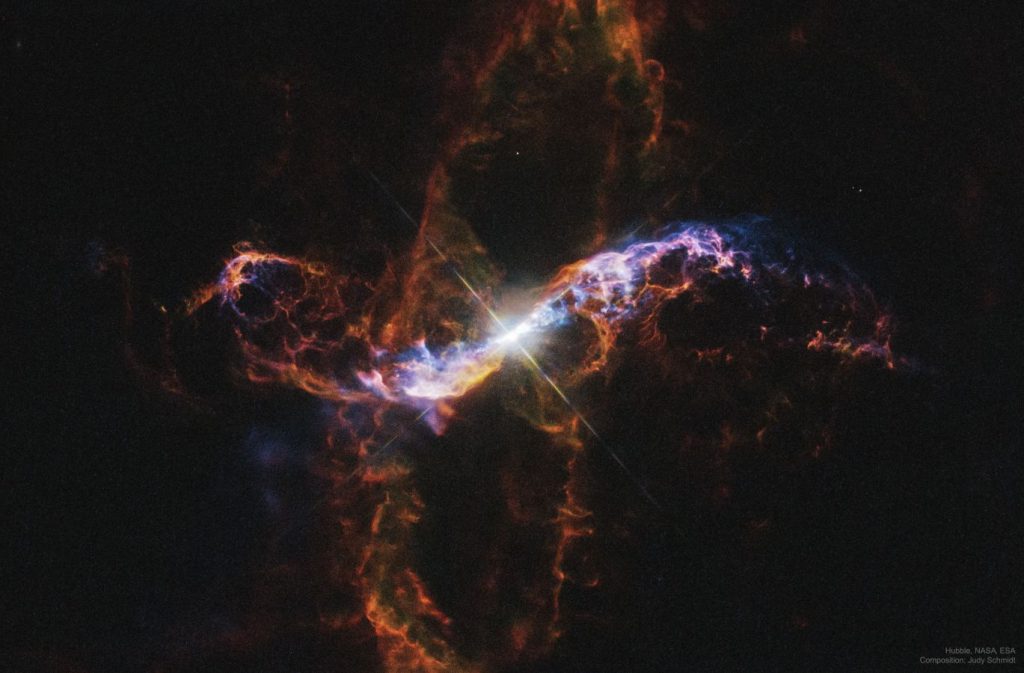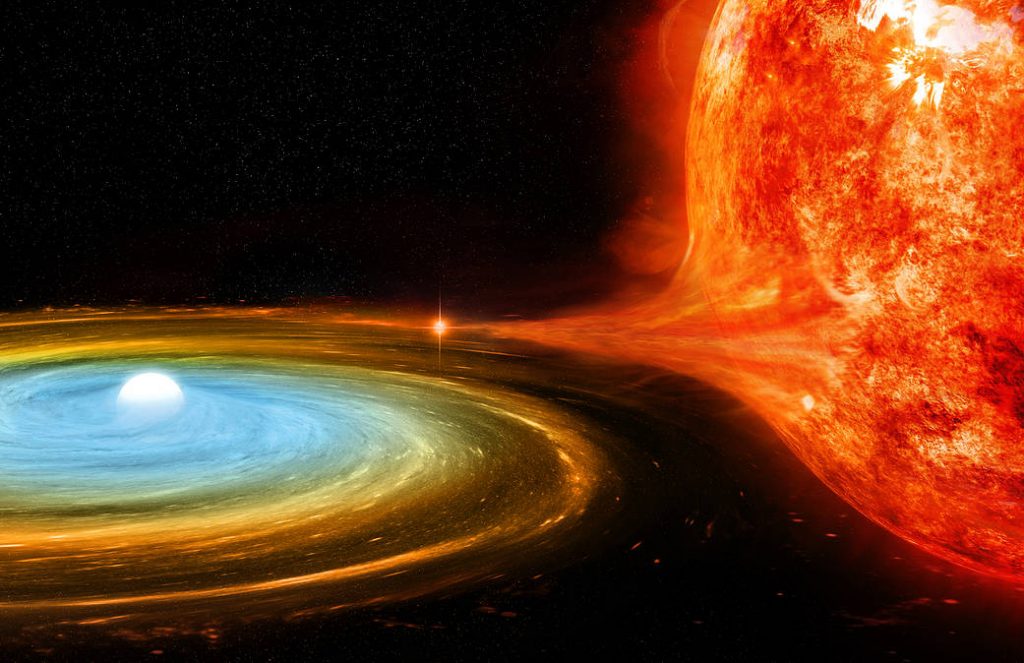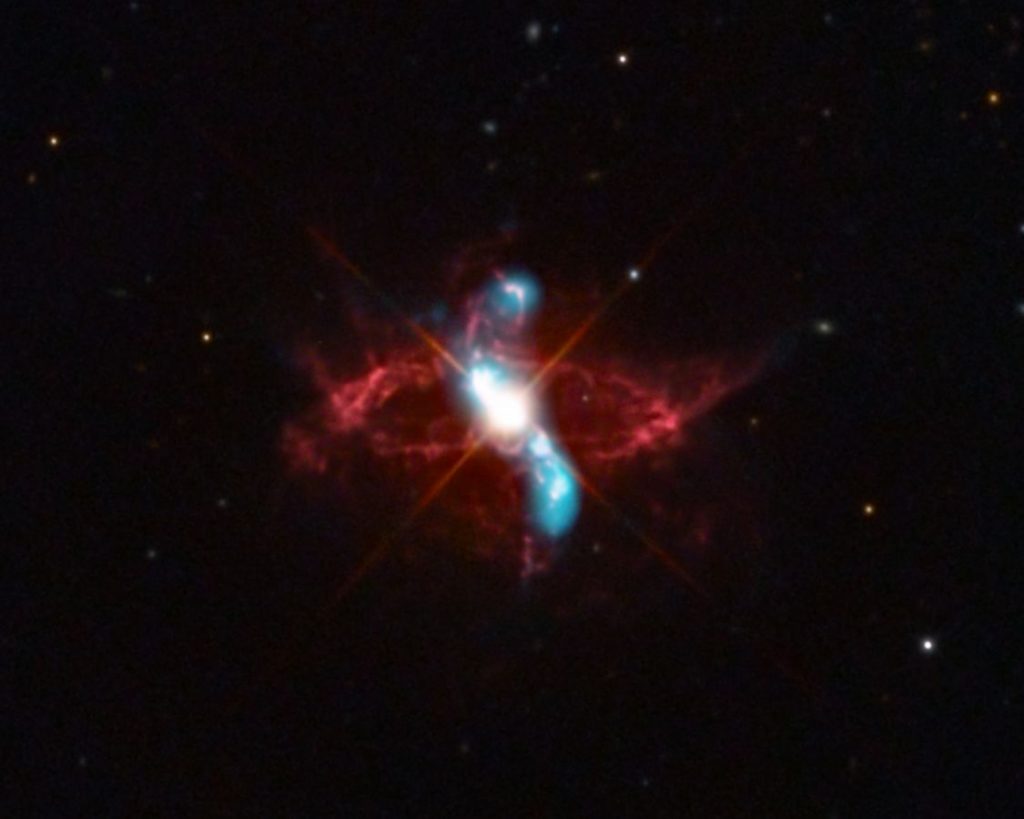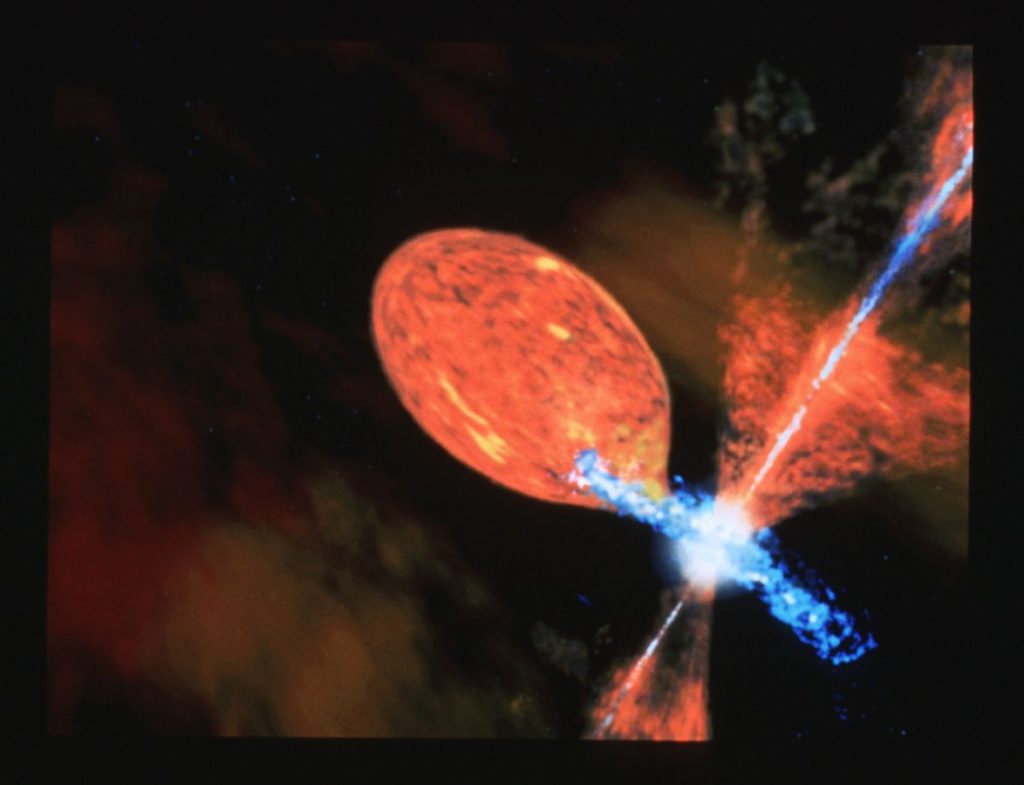Located about 710 light-years away from Earth is a red giant star called R Aquarii. A red giant star is a star that is at the end of its stellar evolution. It’s what will eventually happen to our own Sun. However, there is a lot going on in the photo below and actually, there are two stars in this photo. This story is about these two stars tangled in destiny.

Let’s start with what is happening inside the red giant star R Aquarii. As it’s going through the last hurrah of its life the star is constantly contracting and expanding. As Phil Plait describes it, there is a small instability occurring in the star which triggers these physical contracts and expansions.
As it contracts the star gets hotter. Then the pressure increases and the star starts to slow down the contraction and start to expand the star physically. This whole process lasts about a year and the star darts back and forth between getting more and less luminous. What’s fascinating is R Aquarii variable star increased luminosity by 750 times than when it started! That’s bright enough for even people on Earth to see the change in the night sky that’s 710 light-years away. In fact, Korean astronomers in 1073 AD did notice it.
Anyway, there is another part of the story if that wasn’t exciting enough. There is a white dwarf star that is orbiting it. A white dwarf is stars that have died and are no longer able to continue to burn their fuel. All of its layers are burned off and you’re left with a hot white dense star.
Take a minute and imagine this white dwarf star orbiting this red giant star. What happens is sometimes the white dwarf gets close enough and receives material that falls off the red giant star. What’s cool is this material eventually forms an accretion disk around it. Here’s an illustration NASA created to show you what I mean.

The story doesn’t end there. That’s just one of the things you would see if you travelled 710 light-years to R Aquarri. The other thing you would see is as matter is falling it sometimes misses and instead gets trapped in a strong magnetic field which then creates an intense jet of energy beaming out. Also, these jets are curved! You can see it in the photo below.

As the material from the red giant star showers the white dwarf as well as gets trapped in the magnetic field something starts to happen. Over time the amount of energy gets so intense and so large that it can fuse together. Then it releases all that energy by a huge explosion called a nova.

Once the nova settles down the process starts all over again and builds up the vast amount of energy again. This process in astronomy is called a recurrent novae. Finally, the interesting part that supports these novae have been happening for a long time is the rings we see around the R Aquarri system. Those are from past explosions that have expanded and drifted into space.
This tells us so much about how stars like this behave as well as clues to know where to look for life and where life may have a hard time existing. It’s one hundreds and thousands of stories hidden in our universe and makes me excited about astronomy. Check out the resources below for further reading.
Sources:
